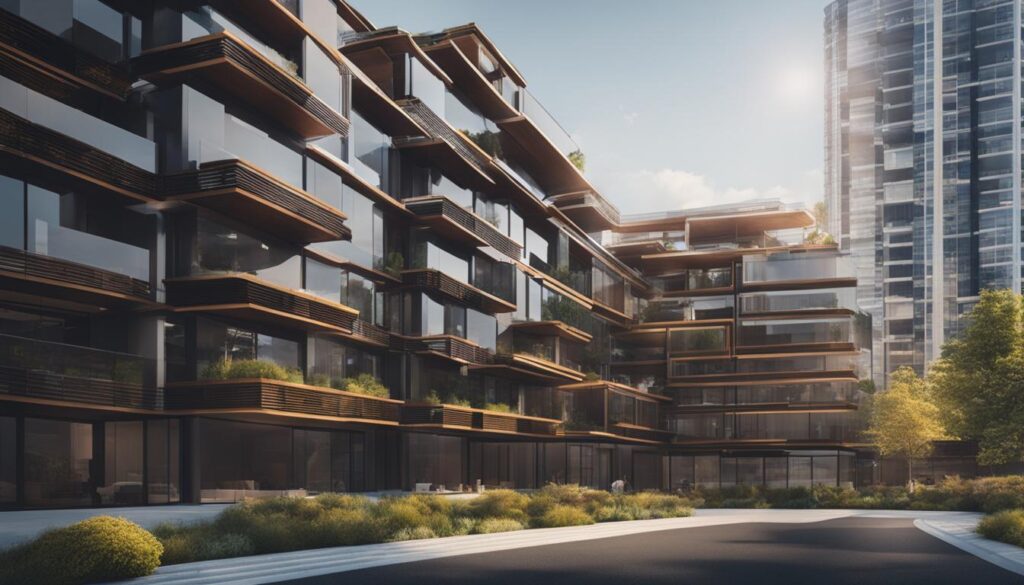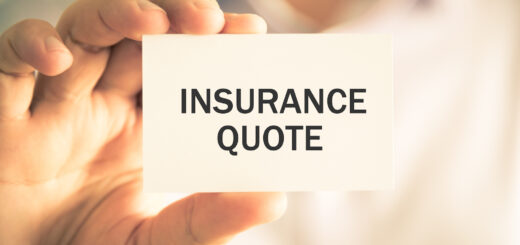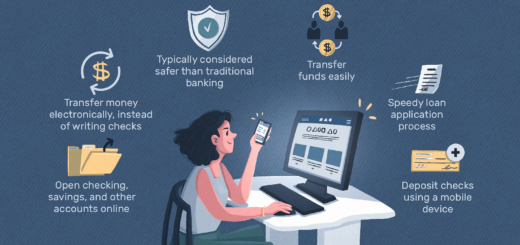Understanding CAM in Real Estate Explained
Welcome to my article on understanding CAM expenses in real estate. As a professional in the industry, I have encountered numerous questions and misconceptions regarding CAM charges. In this article, I will provide you with a comprehensive explanation of CAM in real estate, helping you navigate through this crucial aspect of commercial leasing.
What are CAM Expenses?
CAM expenses, also known as Common Area Maintenance expenses, are an integral part of Triple Net (NNN) Lease agreements in real estate. These expenses encompass the costs associated with the upkeep and operation of common areas within a commercial property. Common areas typically include hallways, elevators, parking lots, lobbies, bathrooms, and building security.
The calculation of CAM fees in real estate is based on the tenant’s square footage relative to the total gross leasable area of the building. This calculation ensures that each tenant pays their fair share of the costs required to maintain the shared spaces. It is important to note that CAM expenses are separate from property taxes and insurance charges, which are the other two components of operating expenses in commercial lease agreements.
“CAM expenses cover the costs of maintaining shared spaces in commercial properties.”
Understanding CAM expenses is crucial for both tenants and landlords. Tenants should be aware of the expenses included in their CAM fees to accurately estimate their monthly overhead costs. On the other hand, landlords must calculate CAM charges fairly to ensure the efficient maintenance and operation of common areas.
| CAM Expenses Included | CAM Expenses Not Included |
|---|---|
| Repair and maintenance of common area facilities | Tenant-specific utility costs |
| Common area cleaning and janitorial services | Individual leasehold improvements |
| Landscaping and outdoor maintenance | Tenant insurance premiums |
| Building security and surveillance systems | Tenant-specific HVAC repairs |
Image Caption: Illustration showcasing the various components of CAM expenses in real estate.
How are CAM Fees Calculated?
CAM fees play a crucial role in the overall lease terms for tenants in commercial real estate. Understanding how these fees are calculated can help tenants anticipate their monthly operating expenses more effectively. Let’s delve into the process of determining CAM fees:
Firstly, the property manager is responsible for calculating CAM fees at the start of each year. They forecast the anticipated CAM expenses for the property, taking into account various operating expenses. These expenses typically include maintenance, repairs, property management fees, utilities, insurance, and other shared services.
Once the expenses are estimated, the property manager allocates the costs proportionally among the tenants based on their square footage. This ensures that each tenant contributes fairly to the overall maintenance and upkeep of the common areas in the property.
CAM fees are usually paid in small increments throughout the year as part of the monthly operating expenses. This approach helps distribute the financial burden more evenly for tenants and facilitates smoother cash flow management.
At the end of the year, the property manager conducts a CAM reconciliation. This process involves comparing the actual CAM expenses incurred during the year with the estimated costs. Based on the reconciliation, tenants may receive a credit if their payments exceeded the actual expenses or may be required to pay an additional balance if their payments fell short.
To summarize, CAM fees are calculated by forecasting the anticipated expenses, dividing them among tenants based on their square footage, and reconciling the actual expenses at the end of the year. This method ensures transparency and fair allocation of costs among tenants.
Here is a table summarizing the CAM fees calculation process:
| Step | Description |
|---|---|
| 1 | Estimate CAM expenses for the property |
| 2 | Allocate expenses proportionally based on square footage |
| 3 | Pay CAM fees in monthly increments as part of operating expenses |
| 4 | Conduct CAM reconciliation at the end of the year |

Understanding how CAM fees are calculated is essential for tenants to budget effectively and anticipate their monthly expenses. By analyzing historical CAM fees and estimating future expenses, tenants can gain a clearer understanding of their financial obligations and make informed decisions when negotiating lease terms.
What is Included in CAM Expenses for Different Property Types?
The items included in CAM expenses vary depending on the type of property. Here’s a breakdown of what you can expect in different property types:
Office CAM Expenses
Office buildings typically include the following in their CAM expenses:
- Electricity (metered across the building)
- Janitorial costs
- Landscaping
- Parking lot maintenance
- Administrative fees
Retail CAM Fees
When it comes to retail properties, CAM fees may cover the following expenses:
- Parking lot maintenance
- Sidewalk repairs
- Lawncare
- Landscaping
Industrial CAM Expenses
Industrial properties typically include the following in their CAM expenses:
- Property and parking lot lighting
- Landscaping
- Parking lot maintenance
- Water for irrigation
These are just a few examples of the common area expenses that may be included in CAM fees for different types of properties. It’s always important to review your lease agreement to understand the specific details of your CAM expenses.
The Importance of Knowing About CAM Expenses
Understanding CAM expenses is essential for tenants in the real estate industry. These expenses, which can be reconciled at the end of the year, have a direct impact on tenants’ monthly operating expenses and overall leasing costs. Tenants need to have a clear understanding of what is included in their CAM charges to effectively manage their budgets and avoid any surprises.
CAM charges often encompass more than just direct costs associated with maintenance and upkeep. Indirect costs, such as management fees and administrative expenses, are also included. These costs may not be easily identifiable, making it crucial for tenants to seek clarification from their landlords or property managers to ensure transparency.
By knowing about CAM expenses, tenants can make informed decisions and negotiate favorable lease terms. They can request detailed breakdowns of the expenses covered by CAM charges and assess whether they are reasonable based on the property’s condition and maintenance standards.
“Understanding CAM expenses allows tenants to take control of their financial commitments and avoid any unexpected financial burdens.”
The Benefits of Knowing About CAM Charges
- Financial Planning: Knowing about CAM expenses helps tenants plan their budgets more effectively, as they can anticipate and account for these costs in their monthly expenses.
- Cost Transparency: Understanding CAM charges enables tenants to understand what services they are paying for and evaluate whether the costs are justified.
- Negotiation Power: Armed with knowledge about CAM expenses, tenants can negotiate with landlords for favorable lease terms, including caps on annual increases or inclusion of specific services.
- Better Lease Comparison: Knowing about CAM charges allows tenants to compare lease options from different properties accurately, enabling them to make informed decisions based on the total cost of occupancy.
- Operational Efficiency: Being aware of CAM expenses helps tenants identify areas where efficiency improvements can be made and collaborate with landlords to minimize costs.
As tenants, it is important to recognize the significance of understanding CAM expenses and how they contribute to overall leasing costs. By actively engaging with landlords and seeking clarification on CAM charges, tenants can make more informed decisions and ensure a transparent and mutually beneficial leasing experience.

CAM Caps and Floors
In commercial real estate leasing, CAM caps and floors are important provisions that help regulate and control CAM charges for tenants. These provisions set upper and lower limits on the annual expenses that tenants are responsible for paying. CAM caps provide tenants with a maximum limit on the amount they will be charged for CAM expenses, while CAM floors ensure that there is a minimum amount tenants must contribute.
CAM caps and floors offer several benefits for both tenants and property owners. For tenants, these provisions provide financial protection by limiting the variability of CAM costs. With a CAM cap, tenants won’t have to worry about unexpected increases in CAM charges beyond a certain point, allowing for better budgeting and financial planning.
On the other hand, CAM floors ensure that tenants contribute a minimum amount towards the shared expenses of maintaining common areas. This helps to guarantee that the necessary funds are available for essential maintenance and upkeep, preventing situations where tenants may try to avoid their fair share of CAM expenses.
Property owners also benefit from the inclusion of CAM caps and floors in lease agreements. CAM caps provide owners with some predictability and control over their expenses by capping the maximum amount they can charge tenants for CAM costs. This can help prevent excessive increases in CAM charges, ensuring that tenants are not burdened with an unreasonable financial obligation.
Table: Comparing CAM Caps and Floors
| CAM Caps | CAM Floors |
|---|---|
| Set upper limits on annual CAM charges | Set lower limits on annual CAM charges |
| Provide financial protection for tenants | Ensure minimum contributions from tenants |
| Help tenants budget and plan more effectively | Ensure necessary funds for maintenance and upkeep |
| Give property owners control over expenses | Prevent excessive increases in CAM charges |
Ultimately, CAM caps and floors are important tools for both tenants and property owners to control and manage CAM costs. They help create a fair and predictable system for sharing the expenses of maintaining common areas in commercial properties. By negotiating CAM caps and floors, tenants and property owners can establish mutually beneficial lease agreements that prioritize transparency and financial stability.
How CAM Charges Are Calculated
CAM charges are calculated using various methods, but the most common approach involves dividing the total CAM expenses by the square footage of the building or the tenant’s occupied space. This calculation determines the cost per square foot, which is then added to the monthly rent as part of the tenant’s CAM charges.
Let’s take a closer look at the steps involved in calculating CAM charges:
- Step 1: Determine Total CAM Expenses
- Step 2: Measure Square Footage
- Step 3: Calculate Cost Per Square Foot
- Step 4: Add CAM Charges to Monthly Rent
- Step 5: CAM Reconciliation
The property manager calculates the total CAM expenses, which include costs for maintaining and operating the common areas of the commercial property. This may include expenses such as cleaning, landscaping, security, repairs, and maintenance.
The next step is to measure the square footage of the building or the specific area occupied by the tenant. This can be obtained through accurate floor plans and measurements.
Divide the total CAM expenses by the square footage to get the cost per square foot. This figure represents the share of CAM charges allocated to each square foot of the property.
The cost per square foot is added to the monthly rent, and the tenant is responsible for paying their pro rata share of the CAM charges. These charges are typically paid in addition to the base rent.
At the end of the year, a CAM reconciliation is conducted to compare the actual CAM expenses incurred with the estimated costs. This process ensures accuracy and may result in adjustments to the tenants’ CAM charges. Depending on the reconciliation, tenants may receive a credit if the actual expenses were lower than the estimate, or they may be required to pay additional charges if the expenses exceeded the estimate.
Understanding how CAM charges are calculated is essential for tenants to accurately budget for their monthly operating expenses. It also enables landlords to allocate costs fairly among tenants based on their occupancy of the property.
Example:
| Tenant | Square Footage | Total CAM Expenses | Cost Per Square Foot | CAM Charges |
|---|---|---|---|---|
| Tenant A | 1,000 sq. ft. | $20,000 | $20 per sq. ft. | $1,667 |
| Tenant B | 800 sq. ft. | $20,000 | $25 per sq. ft. | $1,333 |
| Tenant C | 1,200 sq. ft. | $20,000 | $16.67 per sq. ft. | $2,000 |
As seen in the table above, each tenant’s CAM charges are calculated based on their square footage and the cost per square foot. These charges reflect their proportionate share of CAM expenses for the property.
CAM Tips for Tenants and Landlords
When it comes to Common Area Maintenance (CAM) charges, both tenants and landlords can benefit from understanding the process and implementing some effective strategies. Here are some CAM tips for tenants and landlords:
For Tenants:
- Review lease agreements: Carefully review your lease agreement and pay close attention to the provisions related to CAM charges. Understand the terms and conditions regarding CAM expenses to avoid surprises later on.
- Negotiate favorable terms: Take the opportunity to negotiate favorable terms with your landlord when it comes to CAM charges. Consider requesting a cap on annual increases to have better control over your expenses.
- Request clarification: If you have doubts about the expenses included in your CAM fees, don’t hesitate to ask your landlord for clarification. Understanding what is covered by CAM charges will help you make informed decisions regarding your monthly operating expenses.
- Plan for unpredictability: CAM charges can vary year to year based on actual expenses. It’s important to plan for this unpredictability and have some flexibility in your budget to accommodate any changes in CAM fees.
- Monitor CAM reconciliation: At the end of the year, the actual CAM expenses are reconciled with the estimated costs. Stay updated on the CAM reconciliation process and review any adjustments made to your charges. If necessary, seek further clarification from your landlord.
For Landlords:
- Control maintenance costs: As a landlord, it’s essential to control maintenance costs to ensure the profitability of your property. Regularly assess the expenses related to common area maintenance and look for opportunities to optimize costs without compromising the quality of services.
- Conduct regular inspections: Regular inspections of the common areas can help identify maintenance issues early on. By addressing these issues promptly, you can reduce the risk of costly repairs in the future.
- Adjust CAM charges mid-year if necessary: Sometimes, unexpected circumstances may arise that require adjustments to CAM charges before the annual reconciliation. As a landlord, be proactive in assessing the situation and adjusting CAM charges accordingly to avoid unnecessary financial burden on your tenants.
- Maintain a clear communication: Foster open and transparent communication with your tenants regarding CAM charges. Keep them informed about any changes or updates and address their concerns promptly. A clear and collaborative approach will help maintain a healthy tenant-landlord relationship.
By following these tips, both tenants and landlords can navigate the CAM process more effectively, negotiate fair terms, and control maintenance costs to create a mutually beneficial leasing experience.
Conclusion
Understanding CAM expenses is crucial in the world of commercial real estate. CAM charges play a significant role in determining lease terms and property costs. Tenants must have a clear understanding of what is included in their CAM fees and negotiate favorable terms that align with their budget and needs. On the other hand, landlords should carefully manage CAM expenses to ensure fair and cost-effective maintenance for shared spaces.
With a solid understanding of CAM, stakeholders in the real estate industry can make informed decisions that lead to mutually beneficial leasing agreements. Tenants can accurately anticipate their monthly operating expenses and avoid unexpected financial burdens, while landlords can safeguard their investment by maintaining shared areas properly without overburdening their tenants.
In summary, by comprehending CAM expenses, tenants and landlords can establish a transparent leasing process that promotes fairness, trust, and profitability for all parties involved. Thoroughly reviewing lease agreements, negotiating favorable terms, and maintaining open communication can lead to successful and rewarding leasing experiences in the commercial real estate market.
FAQ
What is CAM in real estate?
CAM, or Common Area Maintenance, refers to the fees paid by tenants to landlords to cover the costs of maintaining shared spaces in a commercial property.
What are CAM expenses?
CAM expenses are fees paid by tenants to cover the costs of maintaining common areas in a commercial property, such as hallways, parking lots, lobbies, and bathrooms.
How are CAM fees calculated?
CAM fees are calculated by the property manager by dividing the anticipated CAM expenses for the property among tenants based on their square footage in relation to the total gross leasable area of the building.
What is included in CAM expenses for different property types?
The items included in CAM expenses vary depending on the type of property. For office buildings, CAM expenses may cover electricity, janitorial costs, landscaping, parking lot maintenance, and administrative fees. Retail CAM fees may include costs for parking lot maintenance, sidewalk repairs, lawncare, and landscaping. Industrial CAM expenses often include property and parking lot lighting, landscaping, parking lot maintenance, and water for irrigation.
Why is it important to know about CAM expenses?
It is important to know about CAM expenses because they are an estimate that can be reconciled at the end of the year. Tenants should have a clear understanding of what is included in their CAM expenses to fully comprehend their monthly operating expenses.
What are CAM caps and floors?
CAM caps and floors are lease provisions that set upper and lower limits on annual CAM charges for tenants. These provisions help limit the variability of CAM costs and provide tenants with some financial protection.
How are CAM charges calculated?
CAM charges are typically calculated by dividing the total CAM expenses by the square footage of the building or the tenant’s occupied space. This determines the cost per square foot, which is then added to the monthly rent.
What are some CAM tips for tenants and landlords?
Tenants should carefully review their lease agreement and negotiate favorable terms regarding CAM charges. They should ask for clarification on the expenses included in their CAM fees and consider requesting a cap on annual increases. Landlords should control maintenance costs, conduct regular inspections, and be proactive in adjusting CAM charges mid-year if necessary.
What is the conclusion regarding CAM expenses?
Understanding CAM expenses is crucial for both tenants and landlords in commercial real estate. CAM charges cover the costs of maintaining shared spaces and can have a significant impact on the overall lease terms and property costs. By understanding CAM, stakeholders in the real estate industry can make informed decisions and create mutually beneficial leasing agreements.

















It's great that you talked about how business insurance can provide financial protection against unexpected events and help ensure the…
I like that you mentioned how business insurance is essential for protecting your bottom line and the long-term viability of…